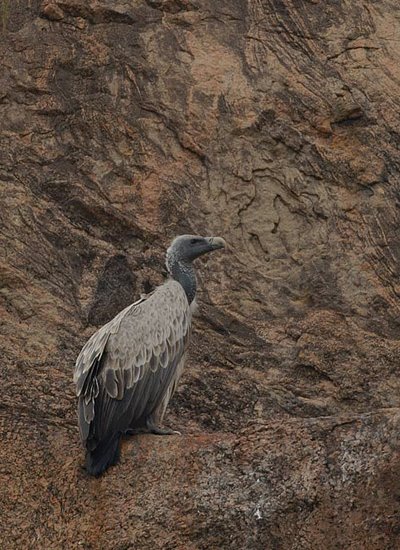| New Photos | Animal News | Animal Sounds | Animal Movies | Upload Photo | Copyright | Korean |
|---|
| Funny Animal Photos | Monsters in Animalia | Wiki Articles Fun Facts about Animals | Links | Home | Mobile A.P.A. |
|---|
| Image Info | Original File Name: Indian_vulture_on_cliff-Long-billed Vulture (Gyps indicus).jpg Resolution: 400x550 File Size: 77840 Bytes Upload Time: 2007:10:28 19:33:47 | |
| Author | Name (E-mail): Unknown | |
| Subject | Long-billed Vulture (Gyps indicus) - Wiki | |
 |
| Email : E-Card | Poster | Web Master Delete Edit Info Admin |
| Description | Long-billed Vulture (Gyps indicus) - Wiki
Indian Vulture
The Indian Vulture, Gyps indicus, is an Old World vulture in the family Accipitridae, which also includes eagles, kites, buzzards and hawks. It is closely related to the European Griffon Vulture, G. fulvus. It breeds on crags or in trees in mountains in Pakistan and India, laying one egg. Birds may form loose colonies. The population is mostly resident. The birds in the eastern part of its range, formerly considered a subspecies, have been shown to constitute a separate species, the Slender-billed Vulture Gyps tenuirostris. Previously, both were lumped together under the name Long-billed Vulture. Like other vultures it is a scavenger, feeding mostly from carcasses of dead animals which it finds by soaring over savannah and around human habitation. They often move in flocks. The Long-billed Vulture is a typical vulture, with a bald head, very broad wings and short tail. It is smaller and less heavily-built than European Griffon, usually weighs between 5.5 and 6.3 kg. It is distinguished from that species by its less buff body and wing coverts. It also lacks the whitish median covert bar shown by Griffon. Diclofenac poinsoning The Indian Vulture and the Indian White-rumped Vulture, G. bengalensis species have suffered a 99% - 97% population decrease in Pakistan & Hindustan and the cause of this has been identified as poisoning caused by the veterinary drug diclofenac. Diclofenac is a non-steroidal anti-inflammatory drug (NSAID) and when given to working animals it can reduce joint pain and so keep them working for longer. The drug is believed to be swallowed by vultures with the flesh of dead cattle which were given diclofenac in the last days of life. Diclofenac causes kidney failure in several species of Vultures. In March 2005 the Indian Government announced its support for a ban on the veterinary use of diclofenac. Another NSAID, meloxicam, has been found to be harmless to vultures and should prove to be an acceptable substitute to diclofenac. In March 2006 diclofenac was still being used for animals throughout India and the changes in Indian legislation are awaited. When meloxicam production is increased it is hoped that it will be as cheap as diclofenac. Captive breeding programmes Captive breeding programmes for several species of Indian vultue have been started. The vultures are long lived and slow in breeding, so the programmes are expected to take decades. Vultures reach breeding age at about 5 years old. It is hoped that captive breed birds will be released back to the wild when the environment is clear of diclofenac. http://en.wikipedia.org/wiki/Indian_Vulture
| |||
| Copyright Info | AnimmalPicturesArchive.com does not have the copyright for this image. This photograph or artwork is copyright by the photographer or the original artist. If you are to use this photograph, please contact the copyright owner or the poster. |
|
|
|
| |||||||
| CopyLeft © since 1995, Animal Pictures Archive. All rights may be reserved. | ||||||||
Stats